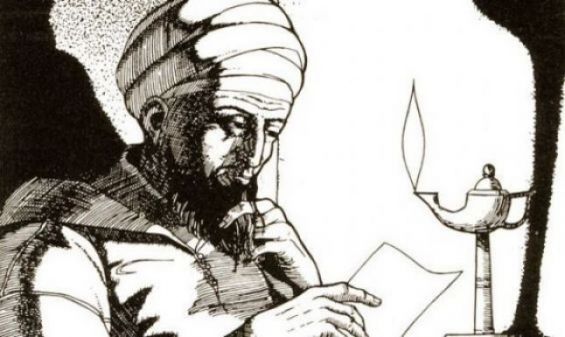He is one of the prominent Amazigh writers during the eighteenth century. Born in Souss, the sufi poet Mohammed Awzal was one of the most important names related to Tashelhit language and literary tradition.
The Induzal-native, born in the late 1600s, left behind manuscripts of poems in Tashelhit written in Arabic characters. But before jumping into poetry, religion and books, young Awzal led an infamous life in his hometown near Taroudant.
The young man fled his village after he killed a family member. According to the account of Mohammed al-Mokhtar Soussi, an Amazigh scholar, politician and writer, Awzal left his village and took refuge in Tamegroute, a village located in the Draa River valley in southern Morocco that hosted a Sufi Zawiya.
Seeking refuge in Tamegroute
There, Awzal spent «20 years of his life», during which he joined the Nasiriyya order, one of the most influential Sufi orders in the Islamic world. In Tamegroute, Mohammed Awzal learned Quran and Islamic law and devoted his time to writing.
After some time, Awzal decided to return to his village. Although that could have resulted in his death at the hands of the relatives of the person he killed, Awzal surrended completely.

The same account recalls that Mohammed Awzal returned to Induzal and put himself at the disposal of the family of his victim, while they actually chose to forgive him due to his new choices in life. Since then, Awzal devoted himself to teaching people in his village, advising them and promoting virtue and Islamic teachings.
In addition to establishing a Medrasa (Islamic school) in his hometown, Awzal focused on his writings in both Arabic and Tashelhit. The works of Awzal are of great importance as they represent an important stage in Tashelhit literature during the end of the 17th century and beginning of the 18th century.
Tashelhit manuscripts
«Awzal wrote six texts, three in Arabic ('Tanbih el ikhouan', 'Targ bi el aassa' and a collection of fatwas) and three in Tashelhit ('El Haoud', 'Nasiha' and 'Bahr doumoua')», wrote IRCAM historian and researcher Rachid Agrour, adding that «El Haoud (The Reservoir), written in 1711, is Awzal’s largest work».
To American historian Teofilo F. Ruiz, Awzal was «among the most important Berber writers». «Pride of place has long been given to Mohammed Awzal» as he «wrote poetical religious treatises such as El Haoud and Bahr al-Dumu (the ocean of tears)», he wrote.

«Both included apocalyptic descriptions based upon a faithful rendering of Islamic law and religion within Maliki tradition», the historian added.
Some of Awzal’s manuscripts are believed to be at the library of Leiden University in the Netherlands. According to the latter «almost a third of all known Tashelhit manuscripts contain parts of his works».
In addition to El Haoud and Bahr al-Dumu, the manuscripts include his other work, 'al-Nasiha' (The Advice), an ode in praise of Sidi Ahmad ibn Muhammad ibn Nasir, Awzal's spiritual guide and grandmaster of the Nasiriyya order (founded by his grandfather).





 chargement...
chargement...













